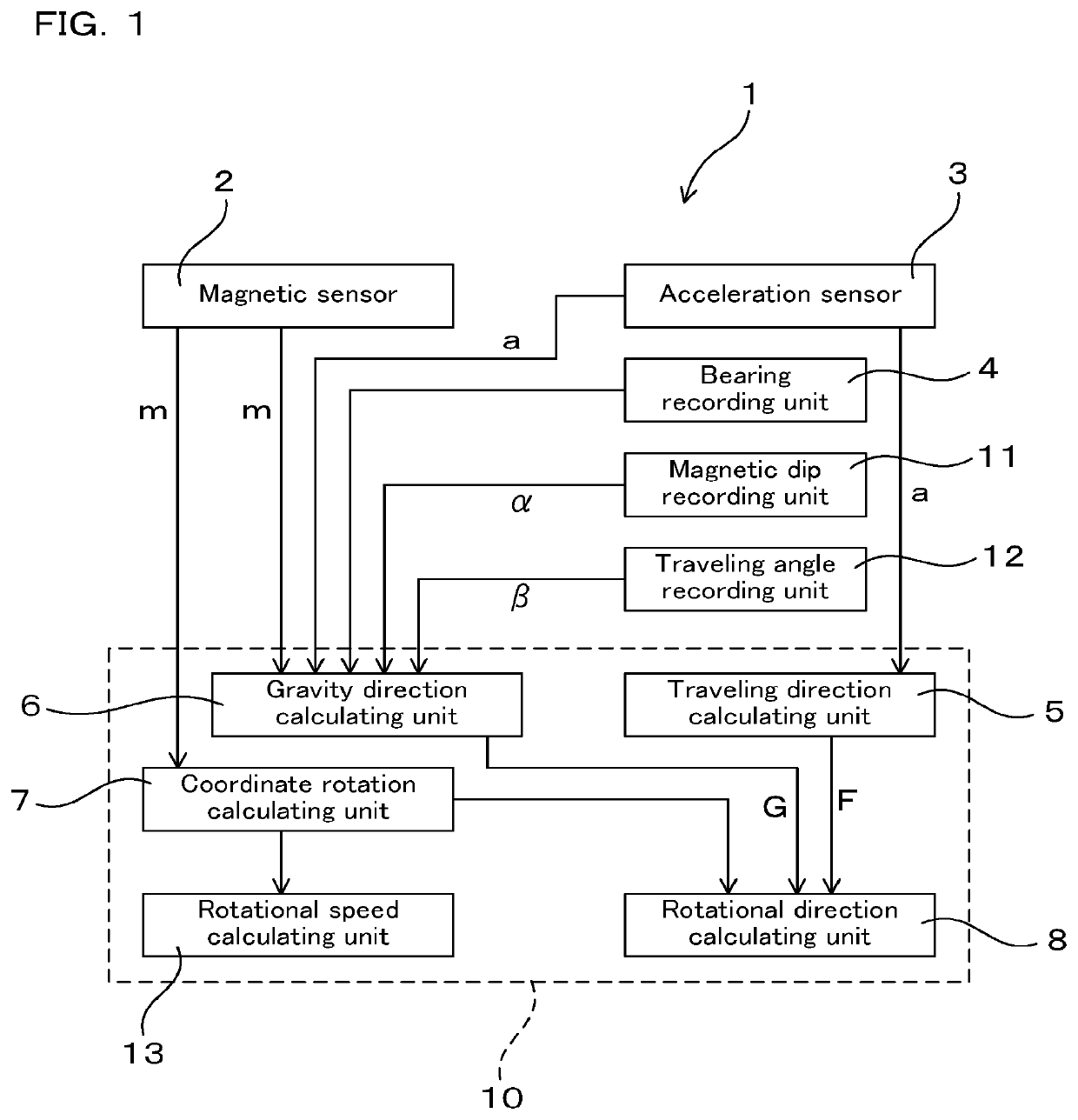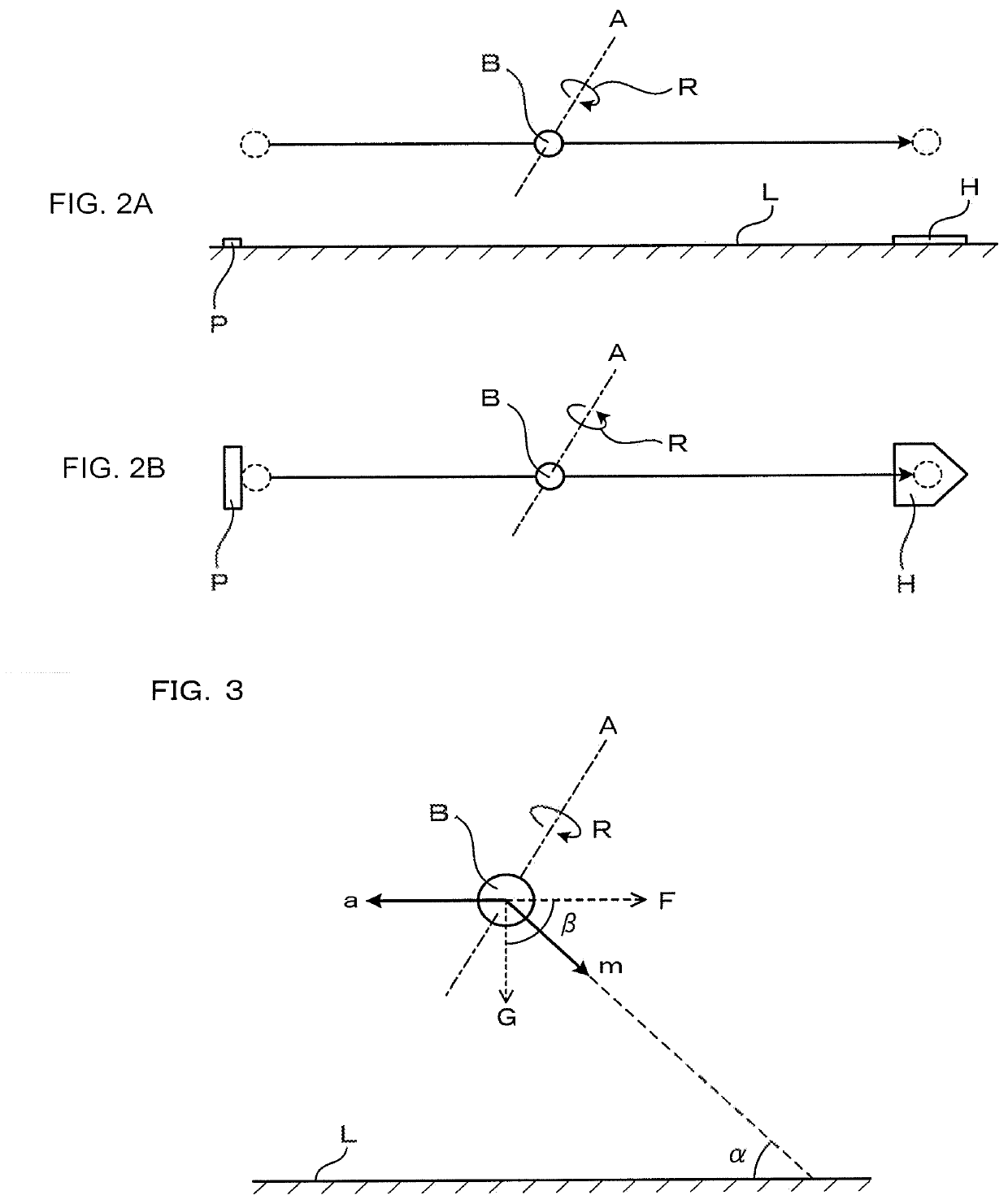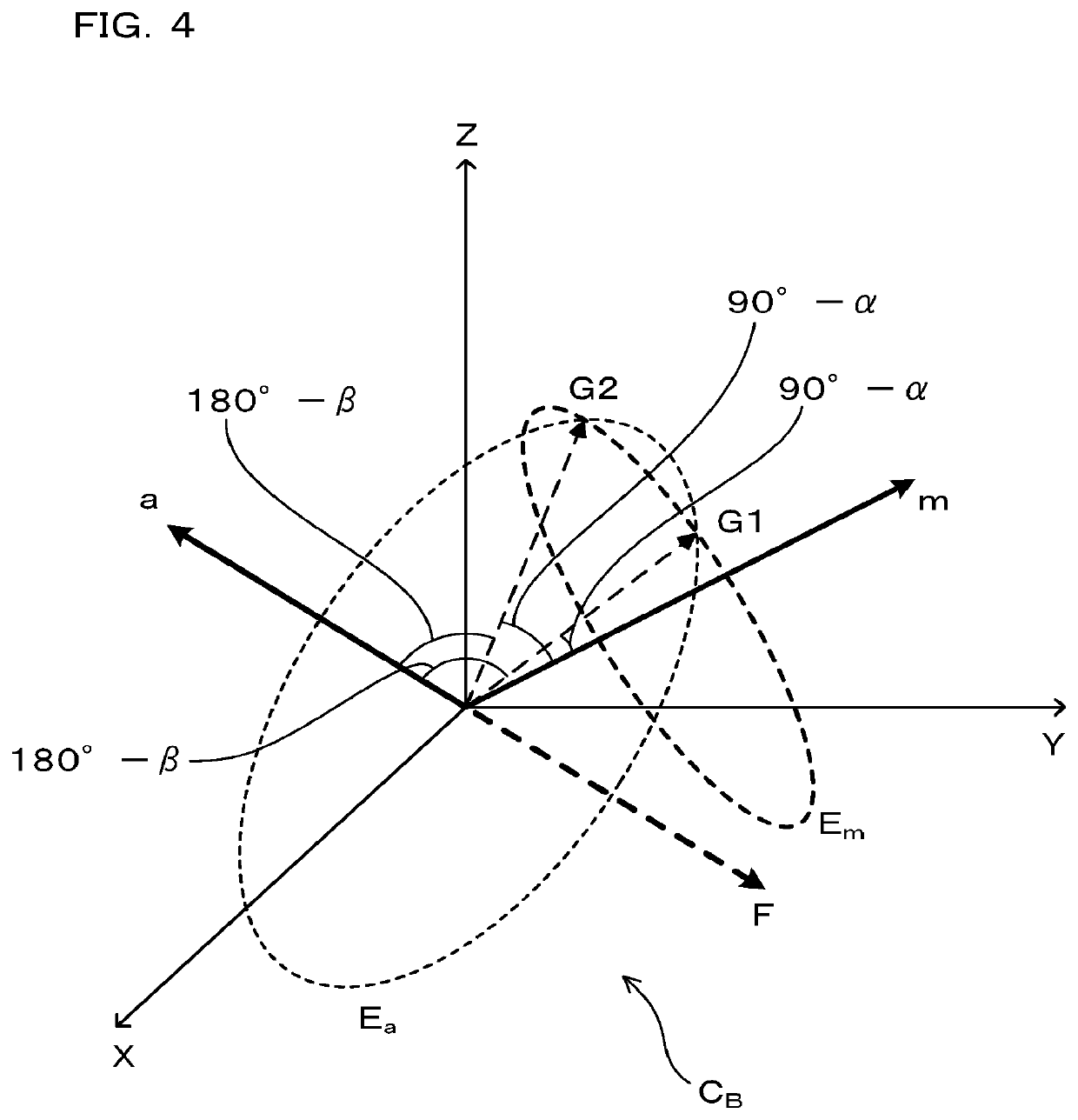Ball rotational direction detecting system
a detection system and rotational direction technology, applied in the direction of acceleration measurement in multiple dimensions, acceleration measurement using interia forces, instruments, etc., can solve the problem of large measurement of an apparatus, and achieve the effect of simple configuration
- Summary
- Abstract
- Description
- Claims
- Application Information
AI Technical Summary
Benefits of technology
Problems solved by technology
Method used
Image
Examples
embodiment 1
(Embodiment 1)
[0061]An embodiment of a ball rotational direction detecting system will be described with reference to FIG. 1 to FIG. 7.
[0062]A ball rotational direction detecting system 1 according to the present embodiment is a system that detects, as illustrated in FIG. 2A, FIG. 2B and FIG. 3, the orientation of a rotation axis A and rotational direction R of a ball B moving in midair, with respect to a traveling direction F of the ball B and a gravity direction G.
[0063]As illustrated in FIG. 1, the ball rotational direction detecting system 1 includes a magnetic sensor 2, an acceleration sensor 3, a bearing recording unit 4, a magnetic dip recording unit 11, and a calculating unit 10.
[0064]As illustrated in FIG. 4, the magnetic sensor 2 detects a geomagnetism vector m in a ball coordinate system CB, which is a three-axis orthogonal coordinate system fixed in the ball B. The acceleration sensor 3 detects an acceleration vector a in the ball coordinate system CB.
[0065]The bearing r...
embodiment 2
(Embodiment 2)
[0113]The present embodiment is, as illustrated in FIG. 8 to FIG. 10, an embodiment of a ball rotational direction detecting system 1 that further includes a bearing calculating unit 14 that calculates the moving bearing of a ball.
[0114]That is, the bearing calculating unit 14 calculates a moving bearing PH based on the geomagnetism vector m detected by the magnetic sensor 2 with a ball B brought to a standstill in a predetermined posture.
[0115]Here, the term “predetermined posture” means, as illustrated in FIG. 9 and FIG. 10, a posture in which a first specific region B1 and a second specific region B2, which lie on the surface of a ball B and point in directions orthogonal to each other, are made to point in the moving bearing PH and a vertically upward direction.
[0116]The first specific region B1 and the second specific region B2 can serve as, for example, external visible marks on the surface of the ball B. The relation between the first specific region B1 and the ...
embodiment 3
(Embodiment 3)
[0124]The present embodiment is, as illustrated in FIG. 11, an embodiment of a ball rotational direction detecting system 1 further including a magnetic dip calculating unit 15 that calculates a magnetic dip α.
[0125]The magnetic dip calculating unit 15 calculates the magnetic dip α with a ball B brought to a standstill, based on the acceleration vector a detected by the acceleration sensor 3 and the geomagnetism vector m detected by the magnetic sensor 2.
[0126]As illustrated in FIG. 12, in the state where the ball B is brought to a standstill, the direction of the acceleration vector a detected by the acceleration sensor 3 is also the gravity direction G. Therefore, detecting both this acceleration vector a and the geomagnetism vector m leads to the specification of an angle formed by the gravity direction G and the direction of the geomagnetism vector m, thereby in turn leading to the specification of an angle of the geomagnetism vector m with respect to a level surfa...
PUM
| Property | Measurement | Unit |
|---|---|---|
| magnetic dips α | aaaaa | aaaaa |
| β | aaaaa | aaaaa |
| angle | aaaaa | aaaaa |
Abstract
Description
Claims
Application Information
 Login to View More
Login to View More - R&D
- Intellectual Property
- Life Sciences
- Materials
- Tech Scout
- Unparalleled Data Quality
- Higher Quality Content
- 60% Fewer Hallucinations
Browse by: Latest US Patents, China's latest patents, Technical Efficacy Thesaurus, Application Domain, Technology Topic, Popular Technical Reports.
© 2025 PatSnap. All rights reserved.Legal|Privacy policy|Modern Slavery Act Transparency Statement|Sitemap|About US| Contact US: help@patsnap.com



